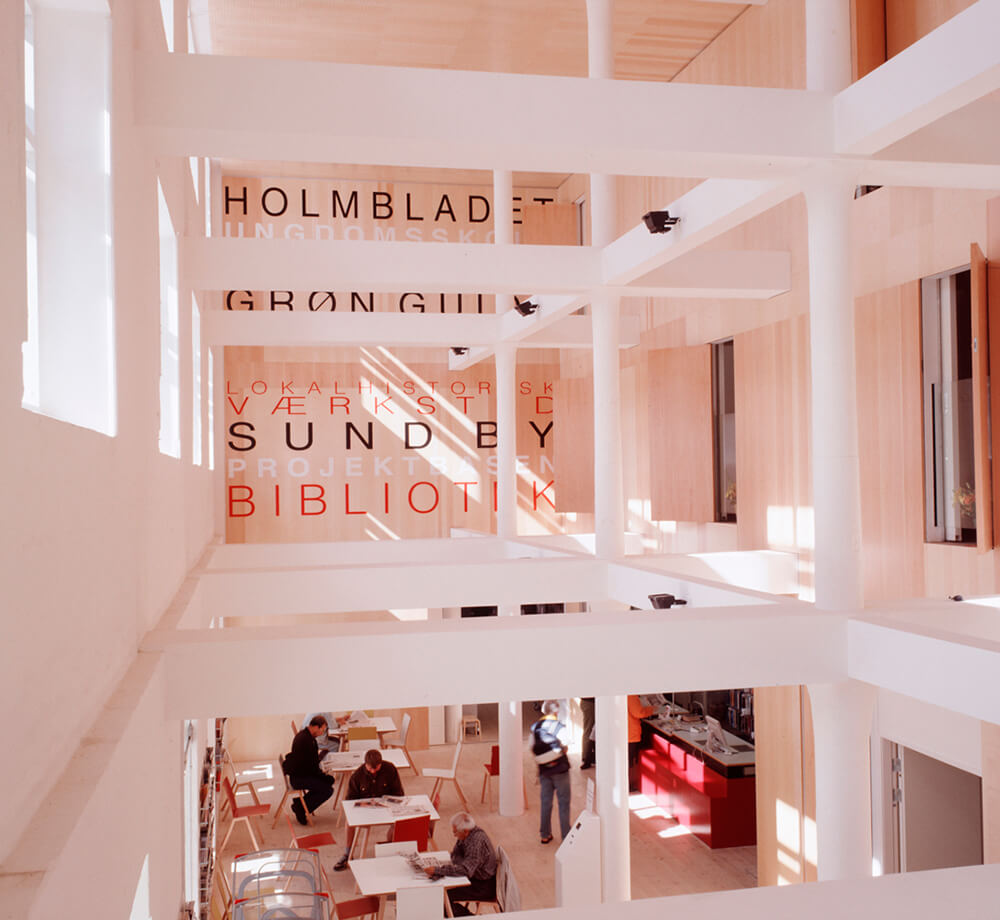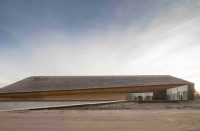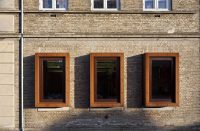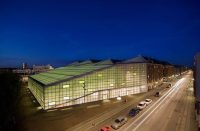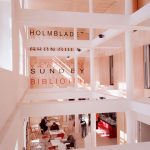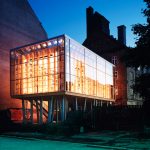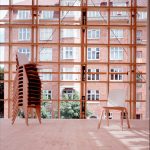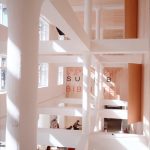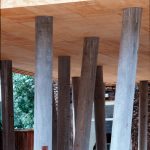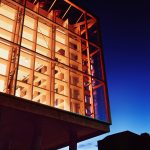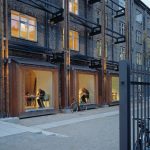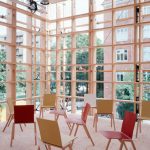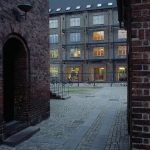Architect(s): Dorte Mandrup
Address: Jemtelandsgade 3, COPENHAGEN, Denmark
Latitude/Longitude: 55.665219045029986,12.603884021096963
Photographs: Jens Lindhe
The Neighbourhood Centre is located in one of Holmbladsgade neighbourhood’s former industrial buildings from 1880. Today the scheme houses a local library and a café on the ground floor, as well as office facilities on the upper floors. In addition to this, a new building is added with a common meeting hall. The project is part of a neighbourhood renewal plan, and is done on an extremely low budget.
The main idea of the conversion was to create a proper connection between the building’s many different activities while ensuring an openness and accessibility for the public, also to the building’s upper floors.
The structural changes to the existing building consisted primarily of the partial removal of the existing floor decks (column supported steel beams with wooden floors) in order to create a new, triple-high foyer space running the length of the building. The horizontal slab effect in the building’s supporting structure, which the deck contributed to, was re-created by a steel truss system mounted on the façade a row of twin columns of larch wood is inserted as a supplementary support to the construction.
The foyer houses the library lending area and a café as well as a freestanding main stairway to the first and second floors. The space’s interior walls are sided with maple veneer panels. In some areas of the upper corridor’s walls facing the foyer, French-door openings were established with glass panels as railings.
The openings can be opened and closed with hinged maple panels. The library lending area and the entrances, as well as the bar area can be closed of with folding doors (also made of maple) so that when the library is closed, the foyer space can be used as a café or for other arrangements. The original window openings on the ground floor were equipped with larch-covered bays to create “quiet places” in the often crowded foyer. The flooring is pine planks, while the steel in the foyer’s exposed columns and beams was covered with ferro-cement stucco fireproofing.
The rest of the building was renovated as simple as possible. The floor beams are visible under the ceilings and the stuccoed outer walls were treated with silicate paint. The former asphalt and concrete floors were removed and the original industry sub flooring consisting of narrow pine planks was planed and oil-treated. Cell offices were built with painted, plasterboard partitions.
The addition was conceived as a “children’s tree house” on trunks of oblique concrete columns. It houses a double-high hall and lies as a freestanding glass-walled structure, slightly turned between the two tall neighbouring buildings, which are covered with different kinds of ivy. The supporting structure in the hall consists of an exposed framework of plywood covered with thermal glazing panels in pine frames. The construction appears like an oversized shelving system and defines the borders of the space while creating a soft transition between the interior and exterior. Access to the addition is via a closed footbridge from the first floor of the main building. This allows it to be used without regard for the library’s opening hours.
Text description provided by the architects.
Extent: 3500m2
Client: The City of Copenhagen
Engineer: Domina A/S
Project team: Dorte Mandrup-Poulsen, Anders Brink Petersen, Søren Schødt, Christina Kvisthøj, Jens Bonnesen
Landscape architects: Dorte Mandrup Arkitekter ApS and Henrik, Jørgensen Landskabsarkitekter
Cost: Dkk 16.500.000
Contributed by Dorte Mandrup

